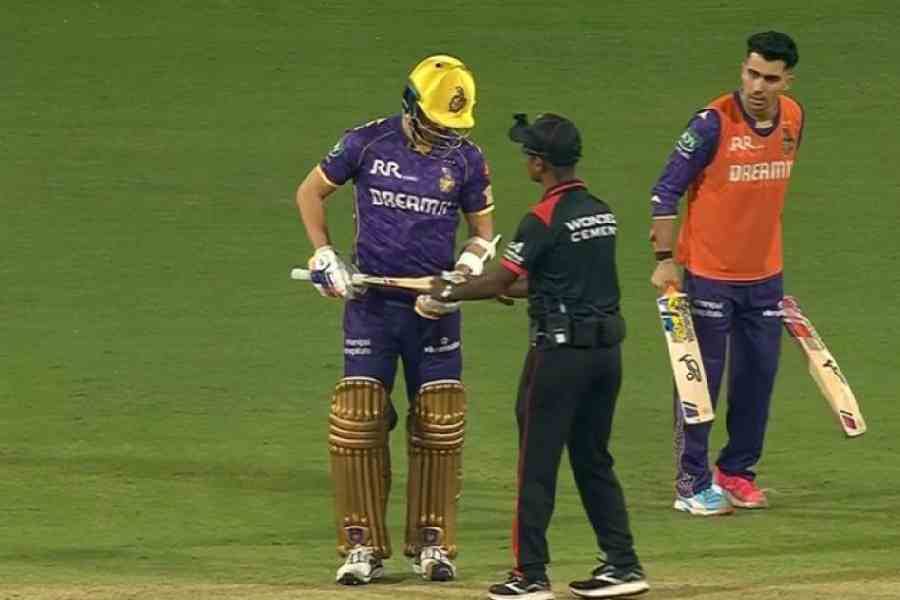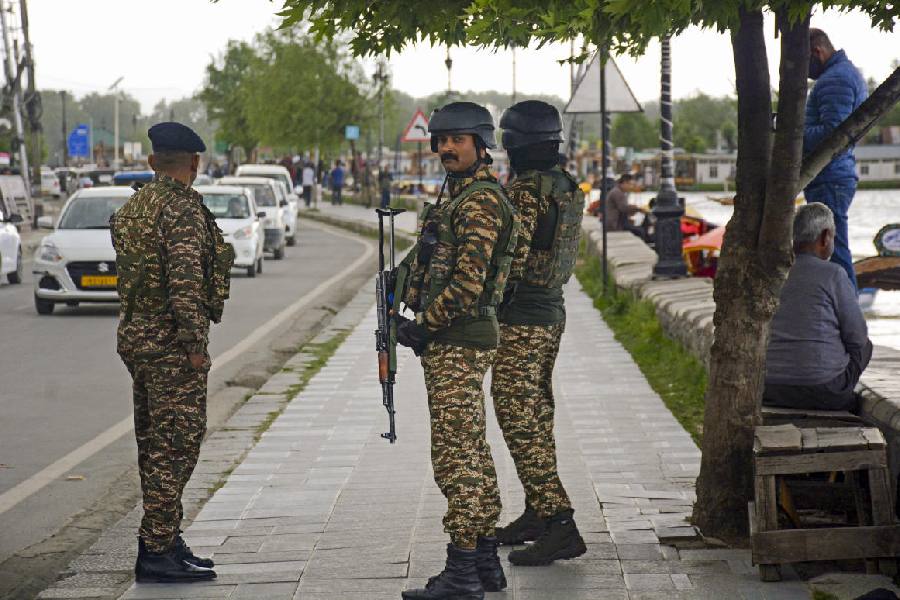After changing two-ball rules and the use of saliva on the ball, now the IPL has pulled down the curtain on cricket bats to make sure bowlers remain effective in this harsh format of the game.
Since April 13, IPL 2025 has seen an addition — on-field bat inspections. A dressing room formality has now become a public theatre this IPL edition, as umpires slot bats into triangular gauges before millions of eyes.
But this mid-season rule change is the IPL’s loudest message. No more free-hits for illegal willows.
During the recent Kolkata Knight Rider-Punjab Kings XI match, Sunil Narine was set to open when the fourth umpire stepped in with the gauge. Narine’s bat failed. Forced to change his bat, Narine was dismissed for five runs by Marco Jansen.
Later in the same match, umpires deemed Anrich Nortje’s bat non-compliant too. Even Andre Russell was almost caught out, with his blade barely squeezing through after an adjustment.
These moments, beamed live to TV audiences, have become regular fixtures in a tournament overflowing with sixes.
The bat gauge, a triangular template with a house-shaped slot is a simple enforcement tool, but the change has had immediate consequences.
While stars like Hardik Pandya and Phil Salt have cleared inspections, the threat of disqualification now hovers over every big-hitter.
Until recently, bat inspections happened quietly. Each player had one bat inspected in the dressing room on the eve of every match.
But this system was flawed. Only one bat was checked, and players often have seven or more in their kit. It was easy to hand over a legal bat for inspection, then walk out with a meatier one come match time.
The umpires’ weekly meeting flagged a rise in failed bat inspections and concerns about players bending the rules. In response, the league has introduced random on-field checks during matches.
Now, the fourth umpire must inspect both openers’ bats at the toss, while on-field umpires can request spot checks at any time. Teams have been given their templates to test gear before the match, but surprise inspections mean there are no guarantees.
The move is grounded in data. IPL 2025 has already seen 19 scores over 200 in just the first three weeks. South African speedster Kagiso Rabada hasjoked the tournament may as well be renamed “Batting League,” while R. Ashwin warned that bowlers might soon need therapy.
The issue, many believe, lies with the bats, the way wood is redistributed around the sweet spot. Mishits are clearing the boundary. Thicker edges, lower bulges and smart shaping have turned modern bats into powerful tools.
The crackdown has also exposed another grey area. Foreign players sometimes requested thicker custom bats for subcontinental pitches. Many of these escaped scrutiny.
No penalties, but no mercy
What happens if a bat fails the gauge test? You just can’t use it. While England’s county circuit penalises teams with point deductions for bat violations, the IPL opts for real-time, on-field enforcement to ensure instant adherence. But there are no fines or bans.
But could this actually help bowlers to stay in the game?
Popular bat manufacturer SG’s Paras Anand supported the bat checks but said big hitting won’t stop. “Most modern bats are just within the legal limits, often only a millimetre or two over,” he told The Times of India. “Players today are stronger, smarter, and have evolved their shots,” he added.
Cricket’s long love-hate with bats
The sport has always wrestled with bat dimensions. From Dennis Lillee’s aluminium bat in 1979 to Ricky Ponting’s graphite-backed weapon in the 2000s, every generation has experimented. Even Matthew Hayden’s short-lived Mongoose bat, which surfaced in the IPL a decade ago, was part of this bat race.
There were even rumours that Sanath Jayasuriya used an extra-thick bat during his six-hitting days — talk that still does the rounds.
Each time, cricket bodies stepped in, and each time, batters found new ways to innovate.
In 2018, the ECB introduced, as part of its domestic playing conditions, checks on bat sizes to ensure compliance with Law 5 of the MCC's laws of cricket. This law restricts bat edges to a thickness of 4cm (1.56 inches), a depth of 6.7cm (2.64 inches), and a width of 10.8cm (4.25 inches).
IPL’s chairman Arun Dhumal said the goal is fairness. “Nobody should feel that somebody has an undue advantage,” he has said.
But the league has realised that T20 is on the verge of becoming a parody, where bowlers are mannequins and boundaries are afterthoughts.
This crackdown won’t eliminate sixes. But it might bring back a balance.










